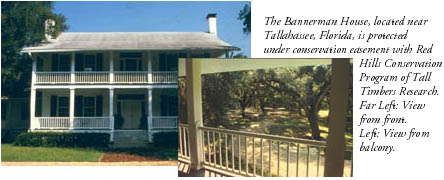Historic Preservation
Historic preservation income tax deductions
Two types of cultural resources qualify for historic preservation income tax deductions. These are a "historically important land area" and a "certified historic structure." To be considered "historically important," properties must meet National Register criteria or be associated with a National Register listed property. This can include a battlefield, a standing structure, or an archaeological site. A certified historic structure is one placed on the National Register of Historic Places or listed as a contributing element to a National Register district as certified by the Secretary of the Interior.

In order to receive an income tax deduction using the historic preservation resource category, the property must also be accessible to the public. Accessibility to the public can be as simple as maintaining visibility from the right of way of a property, or in the case of an interior easement, opening the building up for tours. Download Public Access and Interpretation for Florida's Privately Owned Historic Buildings (pdf) or Archaeological Sites and Private Property: Providing Public Access and Interpretation (pdf) for more information about public accessibility.

